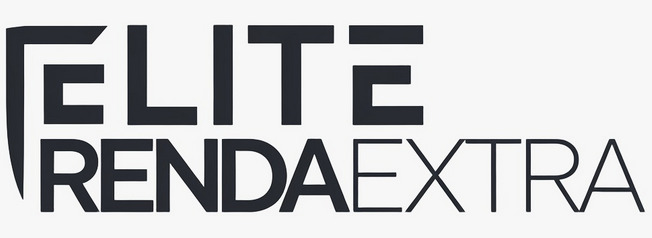Navigating the world of personal finance can sometimes feel like a maze, especially when you’re considering borrowing money. A personal loan can be a useful tool for consolidating debt, financing a large purchase, or covering unexpected expenses, but it’s crucial to approach the application process with a clear understanding and a well-thought-out plan.
This guide is designed to demystify the journey of applying for a personal loan. We’ll break it down into manageable steps, from initial assessment to managing your loan responsibly, helping you make informed decisions every step of the way.
Step 1: Assess Your Financial Needs and Repayment Capacity
Before you even start looking at lenders, the first crucial step is a thorough self-assessment. Why do you need this loan? Be specific. Is it for debt consolidation, a home improvement project, medical bills, or a significant one-time purchase? Clearly defining the purpose will help you determine the exact amount you need to borrow. Avoid the temptation to borrow more than necessary, as this will only increase your repayment burden.
Equally important is evaluating your ability to repay the loan. Take a hard look at your monthly budget. Calculate your total income and subtract all your existing expenses, including rent/mortgage, utilities, groceries, transportation, and any current debt payments. The remaining amount is what you can realistically allocate towards a new loan payment. Consider creating a detailed budget spreadsheet if you don’t already have one. Understanding your debt-to-income ratio (DTI) is also vital here; many lenders have a maximum DTI they will accept.
Step 2: Check Your Credit Score and Report
Your credit score is a primary factor lenders use to determine your eligibility for a loan and the interest rate you’ll be offered. A higher credit score generally translates to better loan terms and lower interest rates. Before applying, obtain a copy of your credit report from major credit bureaus (Experian, Equifax, TransUnion). You are typically entitled to one free report from each bureau annually.
Review your credit report carefully for any errors or inaccuracies, such as accounts you don’t recognize or incorrect payment histories. Disputing and correcting these errors can potentially improve your score. If your score is lower than you’d like, consider taking steps to improve it before applying, such as paying down existing high-balance credit cards or ensuring all payments are made on time. Even a small improvement can make a significant difference in the loan terms you receive.
Step 3: Understand Personal Loan Basics
Familiarize yourself with the common terminology and features of personal loans. This knowledge will empower you to compare offers effectively.
Key Loan Terms:
- Principal: The amount of money you borrow.
- Interest Rate (APR): The Annual Percentage Rate is the yearly cost of borrowing money, including interest and certain fees. This is a crucial comparison point.
- Loan Term: The length of time you have to repay the loan, typically ranging from 1 to 7 years. Longer terms mean lower monthly payments but more interest paid overall. Shorter terms mean higher monthly payments but less interest paid.
- Fixed vs. Variable Rate: A fixed rate remains the same throughout the loan term, providing predictable monthly payments. A variable rate can fluctuate with market interest rates, meaning your payments could change.
- Fees: Look out for origination fees (a percentage of the loan amount charged for processing), late payment fees, or prepayment penalties (fees for paying off the loan early, though these are less common now).
Types of Personal Loans:
- Unsecured Personal Loans: These are the most common type. They don’t require collateral (like a car or house). Approval is based primarily on your creditworthiness.
- Secured Personal Loans: These loans are backed by collateral. If you default, the lender can seize the asset. They may offer lower interest rates due to reduced risk for the lender.
Step 4: Research and Compare Lenders
Once you have a good understanding of your financial situation and loan basics, it’s time to research potential lenders. Don’t settle for the first offer you see. Lenders can include:
- Traditional Banks: Often a good option if you have an existing relationship and a strong credit history.
- Credit Unions: Member-owned financial cooperatives that may offer more favorable terms and lower fees, especially if you’re a member.
- Online Lenders (Fintech Companies): These lenders often have a streamlined online application process and can provide quick funding. They may be more flexible with credit requirements.
When comparing lenders, create a spreadsheet to track key details for each potential offer. Consider the following:
| Feature | Lender A | Lender B | Lender C |
|---|---|---|---|
| Interest Rate (APR Range) | e.g., 5.99% – 18.99% | e.g., 6.50% – 21.00% | e.g., 5.00% – 15.50% |
| Loan Term Options | e.g., 2-5 years | e.g., 3-7 years | e.g., 1-6 years |
| Origination Fee | e.g., 0% – 5% | e.g., 1% | e.g., None |
| Other Fees (Late, Prepayment) | Detail specifics | Detail specifics | Detail specifics |
| Minimum Credit Score | e.g., 660 | e.g., 620 | e.g., 700 |
| Funding Speed | e.g., 2-5 business days | e.g., 1-3 business days | e.g., Next business day |
| Customer Reviews/Reputation | Research online | Research online | Research online |
Step 5: Gather Necessary Documentation
Lenders will require various documents to verify your identity, income, and financial stability. Having these ready can speed up the application process. While requirements vary by lender, common documents include:
- Proof of Identity: Government-issued ID (driver’s license, passport).
- Proof of Address: Utility bill, lease agreement.
- Proof of Income: Pay stubs, W-2 forms, tax returns (especially if self-employed), bank statements.
- Employment Verification: Contact information for your employer.
- Details of Existing Debts: Statements for credit cards, other loans.
- Social Security Number.
It’s wise to create a digital folder with scanned copies of these documents for easy access.
Step 6: Pre-qualify with Multiple Lenders
Many lenders offer a pre-qualification process. This allows you to see potential loan amounts, interest rates, and terms you might qualify for without impacting your credit score. Pre-qualification typically involves a “soft” credit check, which doesn’t affect your credit rating.
Getting pre-qualified with several lenders (e.g., a bank, a credit union, and an online lender) is an excellent way to compare actual potential offers side-by-side. This gives you a much clearer picture than just looking at advertised rates, which you may not qualify for. Remember that pre-qualification is not a guarantee of loan approval; it’s an initial assessment.
Step 7: Formally Apply for the Loan
Once you’ve compared pre-qualification offers and chosen the lender that best suits your needs, it’s time to submit a formal application. This will involve providing all the documentation you gathered and consenting to a “hard” credit check, which can slightly lower your credit score temporarily. Ensure all information on the application is accurate and complete to avoid delays or rejection.
Be prepared to answer any follow-up questions from the lender promptly. The underwriting process can take anywhere from a few hours to several days, depending on the lender and the complexity of your financial situation.
Step 8: Review the Loan Agreement and Accept the Offer
If your application is approved, you’ll receive a formal loan agreement. This is a legally binding document, so review it meticulously before signing. Pay close attention to:
- The final interest rate (APR).
- The total loan amount.
- The monthly payment amount and due date.
- The loan term.
- All fees, including origination fees, late payment fees, and any prepayment penalties.
- The terms and conditions for default.
If anything is unclear or different from what you expected, ask the lender for clarification. Do not sign until you fully understand and agree to all terms. Once you sign, the funds are typically disbursed to your bank account within a few business days, or sometimes even sooner with online lenders.
Step 9: Manage Your Loan Responsibly
Securing the loan is only part of the process. Responsible management is key to maintaining good financial health.
- Make On-Time Payments: Set up automatic payments if possible to avoid missing due dates. Late payments can incur fees and negatively impact your credit score.
- Budget for Payments: Ensure your monthly budget consistently accommodates the loan payment.
- Consider Extra Payments: If your loan doesn’t have prepayment penalties and your budget allows, making extra payments can help you pay off the loan faster and save on interest.
- Communicate with Your Lender: If you anticipate difficulty making a payment, contact your lender immediately. They may have options like forbearance or a modified payment plan to help you avoid default.
A personal loan can be a valuable financial resource when used wisely. By following these steps, you can navigate the application process with confidence, secure terms that work for your financial situation, and manage your debt effectively. Careful planning and due diligence are your best allies in this journey. For further information and consumer advice on borrowing, consider resources that explain your rights and responsibilities when applying for a personal loan.



